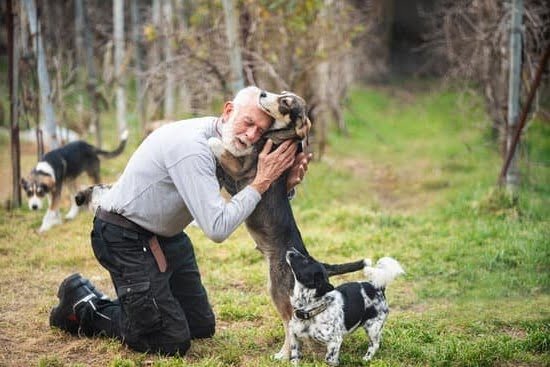Does your dog need a name change? From wanting to personalize your pet’s identity to adopting a rescue pup with an undesirable moniker, there are numerous reasons why someone might seek to train their dog to respond to a new name.
In this article, we’ll explore the process of how to train your dog to a new name, offering tips and guidance on selecting the perfect name, assessing your dog’s current recognition, and using positive reinforcement techniques for successful training.
A dog’s name holds significance in their life as it serves as a form of identification and communication between them and their owner. Whether you’ve adopted a new furry friend or simply want to give your beloved pet a fresh start, understanding the importance of a dog’s name is crucial for effective training.
We’ll delve into the reasons why someone might consider changing their dog’s name and the impact it can have on your canine companion.
Choosing a new name for your dog can be an exciting yet daunting task. It’s important to select a name that not only resonates with you but also suits your dog’s personality and is easy for them to recognize and respond to. We’ll provide tips and considerations for choosing the perfect new name that will make training easier and more enjoyable for both you and your furry friend.
Choosing a New Name for Your Dog
Choosing the right name for your dog is an important part of building a strong bond with your pet. Whether you’ve adopted a dog with a name that doesn’t quite fit or you simply want to change it, selecting a new name requires careful consideration. Here are some tips for choosing a name that your dog will respond to and that suits their personality:
- Consider the sound: Dogs respond best to names that are one or two syllables long and have hard consonants like “d” or “k.” Avoid names that sound similar to common commands like sit, stay, or come.
- Reflect their personality: Take your dog’s personality into account when choosing a name. For example, if your dog is energetic and playful, you might consider names like “Buddy” or “Sunny.”
- Observe their behavior: Spend some time observing your dog’s behavior and quirks before choosing a name. Their unique characteristics can inspire the perfect name that reflects who they are.
- Try it out: Once you’ve chosen a few potential names, test them out to see how your dog responds. Say each name in a happy and upbeat tone to gauge their reaction.
Ultimately, the goal is to choose a name that not only resonates with you but also resonates with your furry friend. By considering these tips and taking the time to select the perfect name, you’ll set the stage for successful training as you teach your dog to respond to their new name.
Remember, changing your dog’s name is not about erasing their past but rather about creating new experiences and memories together. It’s an opportunity to strengthen the bond between you and your pet while also ensuring that their name aligns with who they are now. With patience and dedication, both you and your dog will adjust to the new name seamlessly.
Understanding Your Dog’s Current Name Recognition
When it comes to changing your dog’s name, it’s important to first assess how responsive they are to their current name. This step is crucial in understanding the level of training and effort that may be required to transition them to a new name successfully. Whether you’ve adopted a dog with an undesirable name or wish to give your furry friend a fresh start, evaluating their current name recognition is the first step in the process.
To begin this assessment, observe how your dog reacts when you call their current name. Do they consistently respond by looking at you or coming to you? Are there any instances where they seem confused or ignore their name altogether? These observations can provide valuable insights into their level of association with their current name and determine the extent of training needed for transitioning to a new one.
One effective way to gauge your dog’s responsiveness to their current name is by conducting short training sessions using positive reinforcement techniques. By using treats, praise, and consistent repetition, you can evaluate how quickly your dog learns and responds to their name in different environments and distractions. This will also help in determining how receptive they may be when introduced to a new name.
Furthermore, it’s important to consider the age and previous experiences of your dog when assessing their current name recognition. Older dogs or those with past trauma may require more patience and specialized training approaches compared to younger dogs or those with a history of positive associations with their name.
| Common Challenges | Solutions |
|---|---|
| Confusion over multiple names | Use gradual introduction and phase out old names |
| Resistance or lack of response | Increase positive reinforcement and consistency |
| Difficulty unlearning old associations | Patience and persistent retraining techniques |
The Power of Positive Reinforcement
When it comes to training your dog to respond to a new name, the power of positive reinforcement cannot be overstated. Using treats, praise, and consistency can make all the difference in successfully teaching your pup to recognize and respond to their new moniker. This section will delve into the various methods of positive reinforcement that can be employed when undertaking the task of renaming your beloved canine companion.
The Role of Treats
Treats are a classic tool for training dogs, and they can be especially effective when teaching your dog to respond to a new name. When introducing the new name to your dog, having a supply of small, tasty treats on hand is essential.
Each time you say the new name and your dog looks at you or responds in some way, immediately give them a treat. This positive association will help them understand that responding to their new name results in a delicious reward.
The Importance of Praise
In addition to treats, verbal praise is another crucial element of positive reinforcement. When your dog reacts positively to their new name-whether by looking at you, coming when called, or simply acknowledging the sound-be sure to shower them with verbal praise. A cheerful “Good boy.” or “Good girl.” accompanied by enthusiastic petting or scratching behind the ears will reinforce their understanding that responding to their new name earns them affection and approval from their favorite human.
Consistency Is Key
Consistency is fundamental when training a dog to respond to a new name. Regardless of which method of positive reinforcement you choose-whether it’s treats, praise, or both-it’s imperative that you apply it consistently every time you use the new name with your dog. By maintaining this unwavering consistency, you’ll help solidify the connection between the new name and desirable behavior in your furry friend’s mind.
By employing these methods of positive reinforcement, you can effectively train your dog to respond eagerly and enthusiastically to their new name.
Introducing the New Name
Introducing a new name to your dog is an important yet delicate process that requires patience, consistency, and positive reinforcement. It’s crucial to approach this gradual transition with care and understanding in order to set your dog up for success.
The first step in introducing your dog to their new name is to use it consistently in a positive context. Start by saying the new name in a calm, cheerful tone while engaging with your dog during activities they enjoy, such as playtime or mealtime. This positive association will help your dog form a connection between their new name and enjoyable experiences.
Another effective method for familiarizing your dog with their new name is to incorporate the name into training sessions. Whenever you call your dog’s new name and they respond by looking at you, immediately reward them with praise and a treat. Through repetition and positive reinforcement, your dog will begin to understand that their new name holds value and rewards when they react to it.
Consistency is key when introducing a new name to your dog. Use the new name every time you address or refer to your dog, gradually phasing out their old name over time. With consistent use and positive associations, most dogs can learn to recognize and respond to their new name within a few weeks.
| Step-by-Step Instructions | Key Tips |
|---|---|
| Use the new name consistently in a positive context | Positive associations are essential for familiarization |
| Incorporate the new name into training sessions | Offer rewards and praise for responding to their new name |
| Be consistent in using the new name | Gradually phase out the old name over time |
Practice, Practice, Practice
Setting a Training Schedule
Consistency is key when training your dog to respond to a new name. It’s important to establish a regular training schedule that includes short, frequent sessions. Aim for at least two or three 10-15 minute sessions each day, during which you focus specifically on reinforcing the new name with your dog.
Using Positive Reinforcement
During each training session, make sure to use positive reinforcement techniques to encourage your dog to respond to their new name. This can include offering verbal praise, giving them their favorite treats, or using their favorite toys as rewards. The key is to create a positive association between the new name and something that your dog loves.
Distraction Training
As you progress with training, it’s important to introduce distractions to simulate real-life scenarios where your dog will need to respond to their new name. This can involve practicing in different environments, around other people or animals, or during activities like playtime or walks. Gradually increasing the level of distraction will help reinforce your dog’s recognition of their new name in various situations.
By following these tips and incorporating consistent and regular training sessions into your daily routine, you can effectively reinforce your dog’s response to their new name. Remember that every dog learns at their own pace, so patience and persistence are key throughout the training process. With time and dedication, you will likely start seeing positive results as your dog becomes more familiar and responsive to their new name.
Troubleshooting
When training a dog to respond to a new name, it’s common to encounter challenges or obstacles along the way. This section will provide tips and strategies for troubleshooting these issues and ensuring a smooth transition to the new name.
Here are some common challenges you may face when training your dog to a new name:
– Confusion: Your dog may initially be confused when you start using their new name, especially if they are already accustomed to their old name. This confusion can lead to a lack of responsiveness or hesitation.
– Resistance: Some dogs may show resistance to learning a new name, particularly if they have formed strong associations with their current name. They might ignore you when called by the new name or exhibit behavioral changes.
Here are some tips for addressing these challenges and successfully training your dog to respond to their new name:
1. Stay consistent: Consistency is key when introducing a new name to your dog. Use the new name in all interactions with your pet, from feeding time to playtime and training sessions. Over time, your dog will learn to associate the new name with positive experiences.
2. Use positive reinforcement: When your dog responds positively or shows any recognition of their new name, be sure to reward them with treats, praise, or affection. This will help them understand that responding to their new name leads to positive outcomes.
3. Gradual transition: If your dog is struggling with the change, consider gradually phasing out the old name while introducing the new one. Start by using both names together, then slowly reduce the use of the old one until only the new one remains.
By understanding and addressing these common challenges, you can effectively train your dog to respond to a new name while maintaining a positive and rewarding experience for both you and your furry friend.
Patience and Persistence
In conclusion, training your dog to respond to a new name requires patience and persistence. Changing a dog’s name is a process that takes time and commitment, but it can be done successfully with the right approach. By understanding the importance of a dog’s name and following the steps outlined in this guide, you can help your furry friend adjust to their new name effectively.
Choosing a new name for your dog is an important first step. Consider selecting a name that is easy to pronounce, distinct from their old name, and one that suits their personality.
Once you have chosen a suitable new name for your dog, introducing it gradually using positive reinforcement techniques such as treats and praise will help them associate the new name with positive experiences. Remember to be consistent in your training sessions and patient in allowing your dog to become familiar with their new name.
It’s essential to keep in mind that every dog is different, so the timeline for seeing results may vary. Some dogs may adapt quickly to their new name, while others may take longer. This journey will require ongoing practice and reinforcement, but with dedication and perseverance, you can successfully train your dog to respond to their new name. Remember: patience and persistence are key when it comes to helping your canine companion adjust to their new identity.
Frequently Asked Questions
How Do I Transition My Dog to a New Name?
Transitioning your dog to a new name requires patience and consistency. Start by using the new name frequently alongside the old name, offering treats and praise when they respond. Gradually phase out the old name as your dog becomes more responsive to the new one.
How Long Does It Take for a Dog to Get Used to a New Name?
The time it takes for a dog to get used to a new name varies depending on the individual dog. Some dogs may adjust quickly within a few days, while others may take a few weeks or even longer to fully recognize and respond to their new name. Consistent training and positive reinforcement can speed up the process.
Can You Train a Dog to Learn a New Name?
Yes, you can train a dog to learn a new name through consistent repetition, positive reinforcement, and patience. Use the new name consistently in all interactions with your dog, such as during training sessions, playtime, and feeding. Reward them with treats or praise whenever they respond to their new name, gradually phasing out their old name over time.

Welcome to the blog! I am a professional dog trainer and have been working with dogs for many years. In this blog, I will be discussing various topics related to dog training, including tips, tricks, and advice. I hope you find this information helpful and informative. Thanks for reading!





